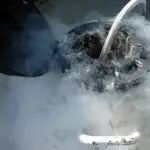 What is DOHC and SOHC?
What is DOHC and SOHC?
DOHC refers to “Double Overhead Camshaft” while SOHC refers to “Single Overhead Camshaft”. These are different configurations on a car engine’s valve train, which is involved in the opening and closing of the intake and exhaust valves.
SOHC is simply called OHC or Overhead Camshaft in the past. It is only in the present when “twin camshafts” are used in cars that the “S” for “single” is added to the term for distinction purposes. As the name implies, there is a single camshaft in SOHC and this is usually installed near the head of the cylinder. Because of the camshaft’s location, valves are operated almost directly and it allows the possibility to have multiple valves (three or four) per cylinder. This setup is advantageous in terms of timing at high rpms. The only problem is that this setup requires a more complex design with a timing belt or chain.
DOHC on the other hand has two camshafts. One installed for each cylinder head. This setup also involves multiple valves on a single cylinder with the intake valves placed on the opposite side of the exhaust valve. Because of this valve placement, DOHC engines are said to provide maximum performance and high HP with smaller engine volume. DOHC engines are also designed to accommodate spark plugs right in the center of the combustion chamber, which results to a more efficient combustion. The double camshafts add more weight to the engine though, and are obviously more costly and complicated than its older SOHC rival. Today’s cars usually have the DOHC setup because of the ease in implementation of variable valve timing.
Overall, the DOHC setup will result to engines running cooler and quieter, and with increased efficiency versus the SOHC setup. The only major disadvantage for DOHC engines is the cost for repairs and/or maintenance.










Leave a Reply